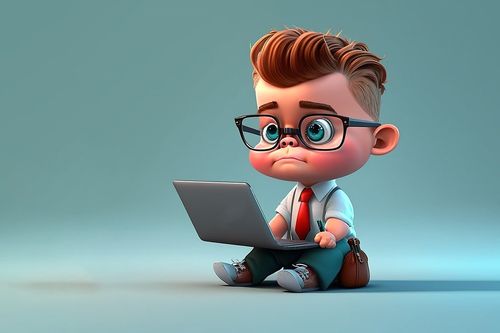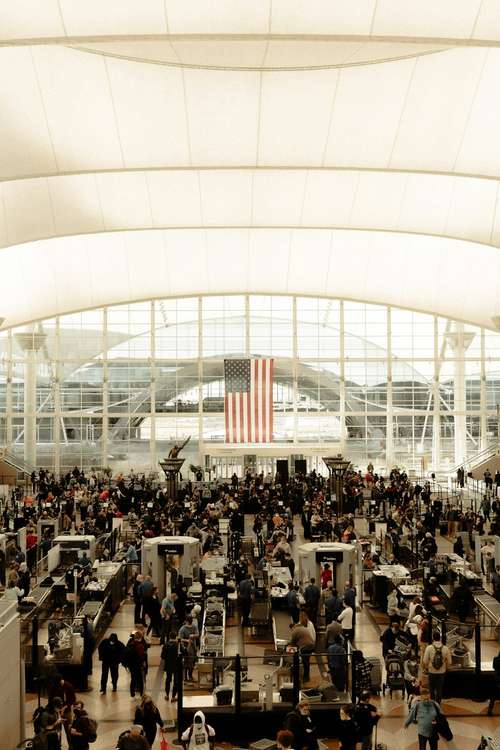Fear is an instinctive and natural reaction to danger, yet it can occasionally manifest in strange and unreasonable ways. Phobias, which are severe and irrational aversions to particular things, circumstances, or creatures, can be anything from the familiar—like a fear of heights or spiders—to the downright strange and obscure.
We will go into the intriguing world of phobias in this post and examine the top 15 weirdest phobias, which make us wonder how our minds can generate such strange worries.
1. Arachibutyrophobia - The Fear of Peanut Butter Sticking to the Roof of Your Mouth

Arachibutyrophobia, the fear of peanut butter adhering to the roof of the mouth, may seem bizarre, but it induces intense anxiety for those afflicted. While not a life-altering condition, it can lead to missed opportunities for enjoying the potential health benefits of peanut butter, such as cholesterol reduction and heart disease prevention.
This irrational fear serves as a reminder of the diverse range of phobias, showcasing how even mundane aspects of life can trigger profound discomfort and apprehension in some individuals.
2. Pogonophobia - The Fear of Beards

Pogonophobia, or the fear of facial hair, may make signs of masculinity and fashion into very stressful things. Those affected might fear anything, from a little stubble to a full beard. This phobia includes a dread of other people's hair and occasionally animal hair; worries about hygienic conditions or health may cause it.
Some people experience this phobia as a result of personal hair-related concerns, such as scalp issues or hair loss. Pogonophobia serves as an example of how irrational concerns may take many different forms and distort how people perceive something as ordinary as facial hair.
3. Ablutophobia - The Fear of Bathing

Ablutophobia, the fear of bathing, transforms a fundamental aspect of personal hygiene into a source of overwhelming dread. While childhood resistance to baths is common, it's rare among adults. For those who experience it, the prospect of being submerged in water can be terrifying.
Skipping the occasional shower may preserve skin health, but chronic avoidance can harm both physical well-being and social interactions. In adults, this fear might stem from early water-related trauma, leading to hygiene-related social problems. Ablutophobia underscores the importance of addressing phobias for a healthier life.
4. Pteronophobia - The Fear of Feathers

Feathers, typically associated with softness and grace, become causes of extreme terror for those suffering from pteronophobia, or fear of feathers. People with this phobia sometimes use extreme avoidance tactics, including going to considerable lengths to avoid being around anything feathered.
The mere sight of feathers can cause extreme anxiety and discomfort, whether they are from birds, down pillows, or even feathered accessories. Pteronophobia is an excellent example of how unreasonable worries can interfere with daily living and cause severe avoidance behavior.
5. Nomophobia - The Fear of Being Without a Mobile Phone

Nomophobia, which is short for "no-mobile-phone phobia," is a modern phobia associated with the lack of smartphones. Many people rely on their phones for communication and information in a world that is becoming increasingly digital.
While most people only feel slightly uncomfortable without their devices, people with nomophobia experience significant anxiety and panic attacks at the thought of being without their phones, especially when there is no network service, or the batteries have died.
This contemporary phobia highlights the need for digital balance in our lives by illuminating society's overwhelming reliance on technology and the psychological effects it might have.
6. Hylophobia - The Fear of Trees

Hylophobia, the fear of trees, stands in stark contrast to the vital role trees play in our ecosystem. Afflicted individuals can experience paralyzing fear and anxiety when confronted with trees, a reaction that typically stems from traumatic experiences or irrational beliefs.
Despite the importance of trees in providing oxygen and habitat for numerous species, hydrophobia illustrates how personal experiences and beliefs can override rational understanding, resulting in an intense and irrational fear of something as essential as trees.
7. Eisoptrophobia - Fear of mirrors

Eisoptrophobia, the fear of mirrors and one's reflection, can be a distressing condition. Individuals with this phobia may experience shame and discomfort when faced with mirrors.
A 2014 case study highlighted a 55-year-old woman who struggled with eisoptrophobia for 30 years, illustrating the profound impact it can have on mental well-being. This fear of mirrors can lead to depression, emphasizing the importance of addressing such phobias to improve one's quality of life and mental health.
8. Oikophobia - The Fear of Home Surroundings and Household Appliances

Oikophobia is a real phobia characterized by an unreasonable fear of domestic settings and objects, which can range from furniture to appliances.
The chronic anxiety that results from this illness makes the idea of dreading one's own house seem strange at first, but it also shows how illogical concerns may seriously interfere with a person's sense of security and comfort in their own home.
9. Chorophobia - The Fear of Dancing

The dread of dancing, or chorophobia, is in opposition to the universal joy and expression that dance is frequently linked with. This phobia frequently results from self-consciousness or performance anxiety, which makes people avoid social situations and dancing-related events.
Even though they are not expected to dance themselves, chorophobic individuals may experience severe anxiety in scenarios involving dancing, such as nightclubs, weddings, or young children wearing tutus. It demonstrates how unfounded anxieties can affect social interactions and prevent people from engaging in fun activities like dancing.
10.Cibophobia - Fear of Food

The fear of eating, or cibophobia, may at first appear ludicrous, yet it frequently results from traumatic events. For instance, a case study showed that a patient had excruciating muscle spasms while eating or swallowing, which contributed to the development of this phobia.
Cibophobia is an irrational fear of eating caused by unpleasant memories or current discomfort, which can make routine behaviors like eating cause worry and panic.
11. Linonophobia - Fear of strings

It is true that traumatic events like being bound against one's will can cause linonophobia, a dread of yarn, rope, shoelaces, and string-like objects. Due to the strong linkages that these upsetting events make between these things and the trauma, they can cause irrational anxiety.
Those who suffer from linonophobia may feel great anxiety even in the presence of harmless string-like things. This phobia serves as a stark reminder of the significant impact that prior traumas can have on how we see the world around us, causing us to feel extremely frightened and uncomfortable.
12.Ombrophobia - Fear of Rain

Ombrophobia, the phobia of rain, is categorized under "natural environment phobias," along with the phobias of wind, hurricanes, snow, cold, and ice (lilapsophobia, chionophobia, and cryophobia).
People who experience these phobias may be more likely to have had formal weather-related education, which gives them a better grasp of the possible risks posed by severe weather. They are intensely aware of the possible risks and anxieties associated with these natural phenomena, which can contribute to their phobias.
13. Hippopotomonstrosesquippedaliophobia - Fear of long words

It's pretty ironic that the fear of long words is an insanely long word itself. Hippopotomonstro-sesquipedaliophobia, or simply sesquipedalophobia, is a playful and satirical phrase describing the aversion to lengthy words.
Since this phobia often revolves around the fear of embarrassing oneself when pronouncing or dealing with long words, it may be more accurately categorized as a form of social anxiety. This is especially important for individuals with dyslexia who may struggle with such words.
14. Globophobia - Fear of Balloons

Globophobia, the fear of balloons, typically arises from childhood experiences of balloons popping, which sensitizes individuals to the fear. As a result, they tend to avoid being near balloons.
However, this fear can become problematic when these individuals become parents and are exposed to balloons at their own children's birthday parties or other kids' events. The fear of balloons, although seemingly unusual, can impact social situations and create challenges for individuals who wish to participate in such gatherings.
15. Zoophobia - Fear of Animals

Zoophobia includes a dread of all animals, but it can also be used to describe a fear of a particular species, such as a dog or a snake. For some people, this phobia might be so strong that they become afraid to leave the house for fear of running into an animal.
A few readers have also told us that they are scared of some of the exotic pets people can own in the US — and we can see why.
When in front of an animal, zoophobia can cause increased sweating, tense muscles, fainting, disorientation, and a raised heart rate. It is difficult to control this extreme dread because it can severely limit one's ability to go about daily life and connect with others.
Conclusion
Phobias, whether common or bizarre, remind us of the intricate and mysterious workings of the human mind. While some may dismiss these unusual fears as irrational, they are very real to those who experience them.
Understanding and compassion are essential when dealing with individuals who suffer from phobias, as these conditions can significantly impact their daily lives. As we explore the world of phobias, we gain insight into the complexity of human emotions and the vast spectrum of fears that can shape our experiences.




